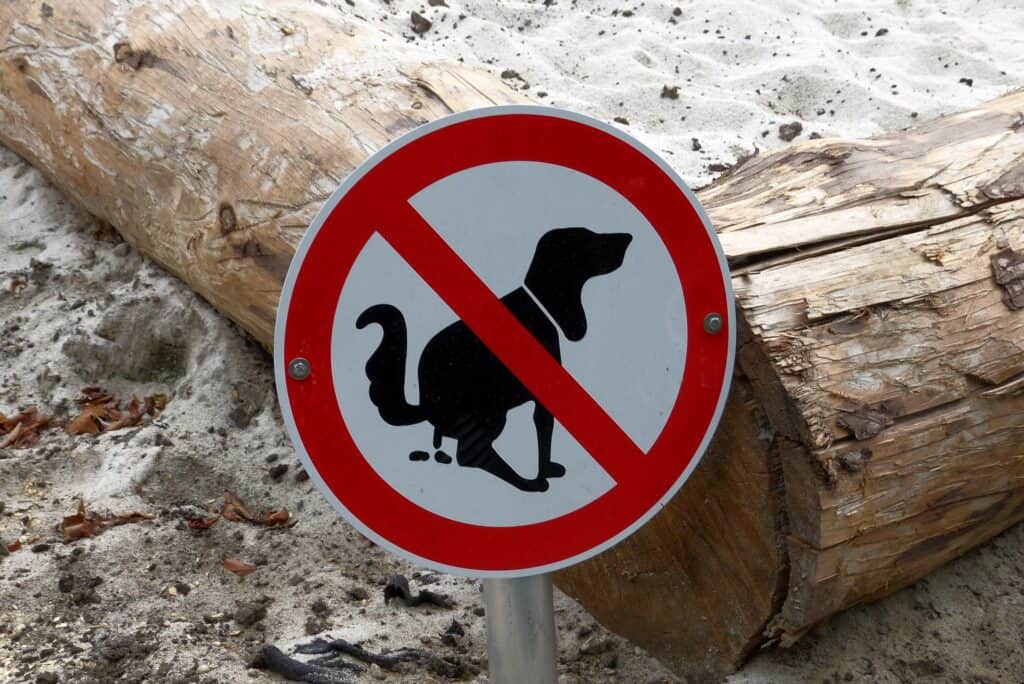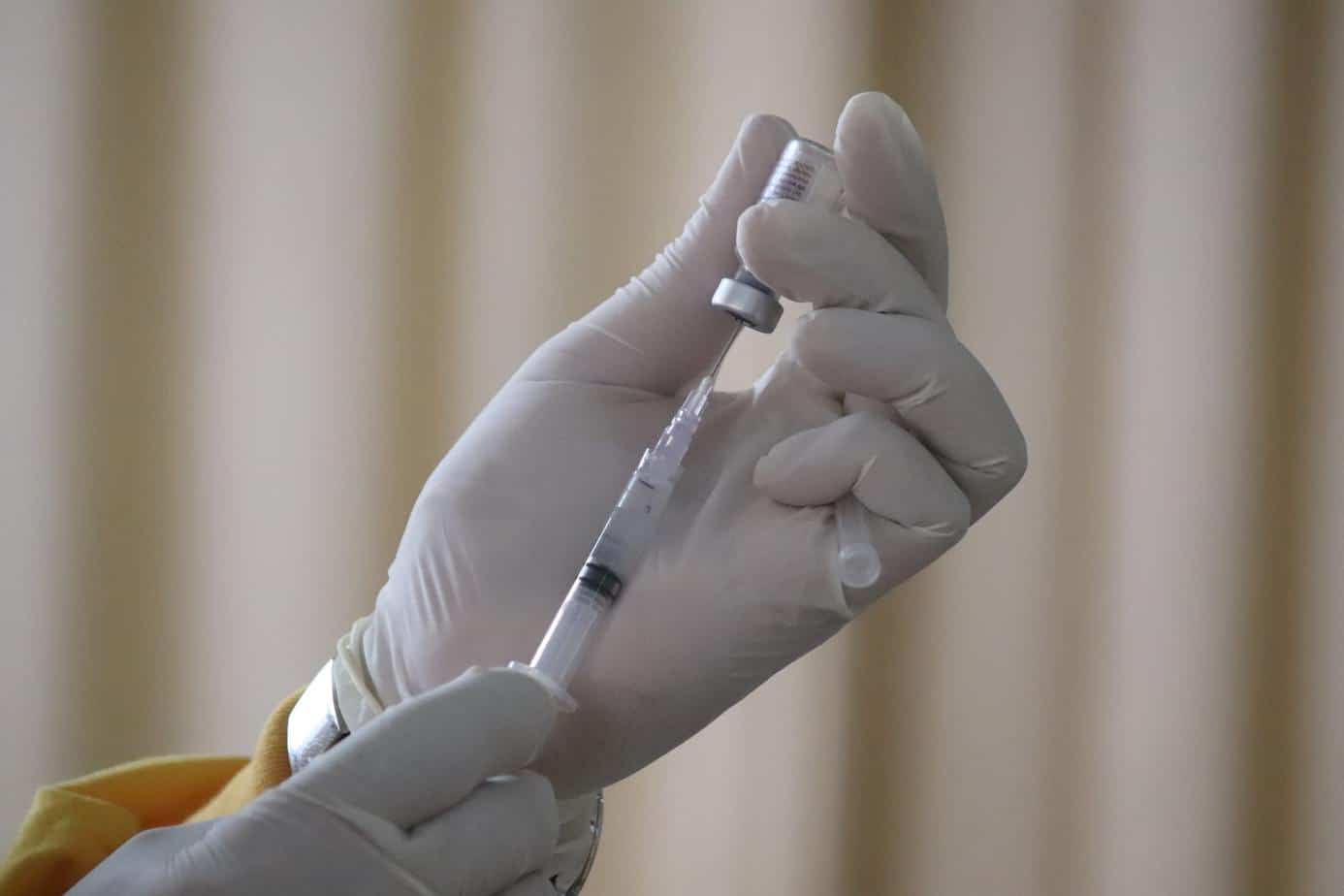- Nom Nom Dog Food Subscription Review - November 7, 2023
- 7 Best Dog Bed Ideas For Great Dane (DIY Options) - July 16, 2022
- Top 5 Rated Best Non-Prescription Diabetic Dog Food - July 15, 2022
Vaccinating your dog is a very important part of dog ownership because first and foremost, you want a healthy dog. With regular maintenance, you can avoid costly and dangerous conditions before they affect your furry friend. You’ll also avoid the stress and emotional pain you experience when your dog is seriously ill.
Responsible, loving dog owners are informed and proactive. That’s why it’s important to understand how dog vaccines fit in with your dog’s overall health care. Are dog vaccines safe? How many vaccines does your dog need? Is there a regular schedule for shots for your dog? This post will answer those questions and also rank the core vaccines your dog requires in order of risk.
Essential Dog Vaccinations: Core Vaccines
Dog vaccines fall into one of two basic categories: core dog vaccines and non core vaccines. That isn’t to say that core vaccines are all that matters, however. While you may wish to add a few non core vaccines, you really can’t do without the core ones.
Much like you probably received the TB or MMR vaccine at some point in your life but may not have gotten the latest flu shot, some shots for your dog are more optional than others.
So, we’ll start with the most critical vaccines your dog needs to stay healthy and move on from there. Even though every one of these shots is essential to give your dog, these are listed in order of importance.
The schedule of shots for puppies generally includes Distemper, measles, para-influenza, hepatitis, and Parvovirus. This may vary from place to place and puppy to puppy, however. Some of the standard vaccines aren’t core and are simply included with core vaccines, so this can get a bit tricky to sort out.
We are going to simplify this procedure and explain the vaccines your dog needs. It’s also important to ask any boarding facilities, group play facilities or daycare facilities you bring your dog to what shots they require. Some will turn you away if you’re missing any on their list.

Rabies Vaccine
If you’ve ever had the unfortunate circumstance of rabies exposure, such as exposure or attack from a wild animal, you probably know how serious it is. It’s very contagious and something the government actually keeps track of. There are mandatory reporters, like vets, who have to notify the local government that a rabies case exists.
Depending on the circumstances surrounding the exposure, booster shots may be necessary. These shots are given in a series based on weight. While they aren’t as bad as the horror stories you may have heard, they aren’t exactly pleasant.
The rabies vaccine is a wonderful way to completely prevent the disease. It’s a one shot deal, which is also a good exchange for a series of shots later.
What Is Rabies?
Rabies is a fatal virus transmitted in the bodily fluids of some mammals that affects the central nervous system. It is called a zoonotic disease because it can cross species to infect a host. It is so fatal, it is considered the deadliest disease on earth and has a 99.9% fatality rate.
That’s a lot to take in. While everyone knows that rabies is dangerous, you may not have known how very deadly it is. So, this scary disease is a pretty real possibility for your dog and your family as well. Vaccinating your dog lowers the risk for everyone.
How Is Rabies Contracted?
Rabies is carried in the saliva of the infected or host animal. Though a bite or scratch, the host infects another mammal. Dogs are the primary source of rabies cases in humans, accounting for 90% of the exposure. It’s also possible to contract rabies if infected saliva comes into contact with an uninfected mucus membrane like the eyes, nose or mouth.
Thankfully, that type of exposure is far less common than bites or scratches. If you get to the doctor quickly enough, you can halt the virus’ progression through a series of shots.
Other well known rabies carriers are raccoons, bats, coyotes, foxes, and skunks.
Rabies Symptoms In Dogs
Dogs exhibit dramatic symptoms after contracting rabies. If you’re familiar with them, you can protect yourself from animals acting strangely. In general, infected dogs may eat strange things, drool excessively, have problems moving or seem clumsy, run a fever, and experience large changes in behavior.
There are three main phases to rabies infection. Each phase of rabies has its own specific cluster of symptoms. Since you are going to vaccinate your dog for this virus, you want to look for this type of behavior in stray or wild animals.
Prodromal Phase
Dogs with rabies are in the prodromal phase for 2-3 days after infection. These time guidelines are just that. They are not hard and fast rules as the rabies virus can incubate for different time periods.
During the prodromal phase, a dog may seem anxious, apprehensive or suddenly keep to himself. The dog’s personality may change with friendly dogs acting shy or aggressive. Aggressive dogs will do the opposite and be docile or even affectionate. Dogs will generally lick the bite area repeatedly which will give a valuable clue to sudden behavior changes.
Furious Phase
The name of this phase says it all and it’s what most people picture when they hear rabies, a la Old Yeller. Dogs in the furious phase are irritable and restless. They are hypersensitive to sounds and stimulus. They increasingly become more aggressive and also start to wander. This is a bad combination, obviously.
The furious phase lasts 1 to 7 days. Toward the end, an infected dog may seem disoriented and lethargic as they enter the paralytic phase. As you will see, that phase sometimes comes out of order, however.
Paralytic Phase
Also known as the dumb phase, the paralytic phase can come either before or after the Furious Phase. In this stage of rabies, dogs drool excessively and exhibit difficulty swallowing. Some dogs make a choking sound as this happens.
Their jaw may droop and they experience labored breathing. They can even have paralysis of the face. The infected dog grows weaker until it succumbs to this terrible illness.
The paralytic phase usually occurs in 2 to 4 days after the animal first appears ill. Unfortunately, it results in respiratory failure and death.
Distemper Vaccine
Distemper is another dog disease to prepare for. It’s considered one of the major conditions to avoid, which is why it’s one of the core dog vaccines. In spite of this, you may not really know what distemper is since it is less dramatic than rabies.
Let’s look closer at what distemper is, how dogs get it, and what the symptoms and ultimate results of the disease are.
What Is Distemper; How Do Dogs Get Distemper?
The canine distemper virus attacks the mucus membranes and GI system of a dog. It is passed from dog to dog by saliva, urine, or blood and can also travel through the air. That means dogs can contract it from each other through play or sharing food and water bowls as well as sharing the same environment. Because distemper is so contagious, it’s important to stop the spread by vaccinating your dog for it.
While it’s true that everyone else’s dog is probably vaccinated and therefore unlikely to expose your dog to distemper, that’s the kind of thinking that starts outbreaks. It is also largely accepted that the distemper vaccine is one of the most effective and least controversial dog vaccine.
There is a test for the condition, but some dogs exhibit false negatives on the test. Your vet will consider the dog’s overall health and history as well as their current symptoms and level of exposure risk to properly diagnose your dog with distemper.
What Are The Symptoms Of Distemper?
A dog with distemper initially appears to have a cold. It will sneeze and its eyes and nose may run. The discharge is a thick mucus that isn’t normal, and this can be a good way to catch a case of distemper early.
Eventually, if left untreated, distemper will cause a high fever and digestive upset. Dogs with distemper look lethargic and depressed and may stop eating.
Distemper is treatable but cannot be cured. There are prescription medications to improve an infected dog’s quality of life and manage the virus. Some dogs bounce back from distemper and others aren’t so lucky. In some cases, distemper is fatal.
Additionally, dogs who recover from distemper can experience negative effects later in life even if they seem to gain their health back initially. Aging distemper carriers can have brain and nerve damage or suffer from neurological problems like seizures.
Parvovirus Vaccine
Parvo is a scary one especially for new puppy owners. In fact, many dogs up for sale or adoption come with a vet certificate that they are parvo free. This is because the condition is fatal and quite upsetting to witness. It’s also very contagious which makes caring for a dog sick with Parvo difficult and exposes other pets in the home to illness.
What Is Parvo?
Parvo is a virus that is so contagious that even humans can carry it from one infected dog to another. It affects the intestinal tract and white blood cells of a dog. It can do lifetime damage to to the heart in puppies and is sometimes fatal.
The vaccine isn’t 100% effective, and while no vaccine is, the antibodies present in puppies passed from their mothers can block the vaccine. In these cases, the dog still has no immunity to the Parvo virus. Therefore, if you vaccinate your dog and later learn your dog has been exposed to an infected dog, it’s a good idea to go to the vet and explain the situation so your dog can be tested for Parvo.
Some vets recommend waiting until 12 weeks or later to give this vaccine for less interference from the mother’s passed on protection.
Sometimes the test shows no immunity even when your dog is protected, to complicate this situation a bit further. It’s fairly common for labs to run a Parvo exposure test rather than a Parvo immunity test and the two do not have the same saturation level. For instance, a test for Parvo exposure requires a higher level of antibodies present than one for immunity. Your best bet is to discuss this with your vet so you are informed and advocating for your dog’s best treatment.
How Do Dogs Get Parvo?

Parvo is contracted through contact with an infected dog’s feces. It has a real tenacity and can survive for months in an unsanitary environment. Dogs with high exposure to other dogs, puppies, and stray dogs are very high risk for contracting Parvo.
Parvo Symptoms
The Parvo symptoms are mostly intestinal. Infected dogs have foul smelling, watery stools and may appear lethargic. They can also vomit and lose interest in eating.
This is a core vaccine because Parvo is everywhere and even adult dogs can contract the disease.
Hepatitis Vaccine
Hepatitis is a virus that affects the liver. You may be familiar with the condition in humans. Even though the hepatitis vaccine is one of the core dog vaccines, the disease doesn’t get as much attention as something like rabies. So, even if you are protecting your dog from this dangerous disease, you might not know much about it.
Let’s demystify canine hepatitis so you understand why it’s vital to protect your dog.
What Is Dog Hepatitis?
Hepatitis in dogs is caused by a virus called CAV-1 which also begins with upper respiratory symptoms. In addition to affecting the liver, it affects the kidneys, eyes, and the cells that line the blood vessels.The disease progresses to the blood and then the liver where it uses specialized white blood cells located there to replicate and continue its spread through the body. An infected dog can pass the disease through urine and feces.Young dogs under a year old are at the greatest risk to contract hepatitis. Because dogs are frequently in contact with the excrement of other animals, the risk for hepatitis is fairly high and proper vaccination is crucial to your peace of mind as a dog owner.
How Do Dogs Contract Hepatitis?
An unvaccinated dog can contract hepatitis through contact with the bodily fluid of another animal with the disease, particularly feces and urine. Wolves, coyotes, bears and fox also carry the disease and can expose your dog though the same type of contact: i.e., their poo and pee. That means hikes, playing in fields, and even your own backyard could expose your dog to hepatitis if you haven’t had him vaccinated.
Canine Hepatitis Symptoms
If your dog is infected with canine hepatitis they may experience fever and signs of CNS problems. Additionally, their blood vessels could collapse or they could have issues with blood coagulation. In the final, severe stage of the disease, death is close at hand.Some dogs live with the disease and act disinterested in eating, lethargic, have GI symptoms like vomiting, show swelling in the abdomen from fluid retention and an enlarged liver, have swollen lymph nodes and skin issues. Frequently, the first sign of infection is tonsillitis.One of the best known symptoms of hepatitis in dogs is an eye inflammation and enlargement of the cornea which can progress to ulceration and glaucoma. This is often experienced by owners as the appearance of a blue hue to the eyes.
Non-core Dog Vaccines

Let’s move on to other vaccines that are important but less crucial than the core vaccines detailed above.
Veterinarians recommend these vaccines in addition to the core vaccinations your dog has to have especially for dogs that visit doggie day cares or dog parks. There is some controversy over the bordetella vaccine, however and it may be one you can keep off your list.
Other non-core vaccines may depend on where you live and your lifestyle since your vet will make recommendations based on your particular situation.
Bordetella Vaccine
Bordetella deserves some examination so you can choose whether or not you need the vaccine to protect your dog. If your dog rarely comes into contact with other dogs, you may choose to skip the bordetella vaccine.
To make an informed decision, you need to know what bordetella is, how dogs get it, and what symptoms do they show if they have the disease?
Bordetella usually works its way out on its own and most healthy dogs recover just fine from exposure. It’s a bit like the flu and flu shot, where older, younger, and weak dogs who have exposure to lots of other dogs are the best candidates.
What Is Bordetella?
Bordetella is more commonly called kennel cough. It’s a very contagious upper respiratory condition that can spread through a boarding facility, dog park or day care. It’s rarely fatal but is uncomfortable for your dog. It’s not a virus, but a bacterial infection.
How Is Bordetella Contracted?
One dog can give bordetella to another dog through sneezes, running eyes and noses, and saliva. The bacteria can also infect other dogs through contact with the same air a sick dog is breathing.
According to some vets, there is shaky evidence that the vaccine protects dogs in any significant way and that the disease itself is rarely life threatening. Additionally, this vaccine can be administered intra-nasally and it may be more effective that way. Some vets recommend a combination of the bordetella nasal spray and a traditional shot as a follow up several weeks later.
Canine Parainfluenza Virus and Vaccine
This disease is also associated with kennel cough and is upper respiratory in nature. It’s not a core vaccine, but your vet may recommend it if your dog spends a lot of time in the kennel or with other dogs.
We’re all familiar with influenza and the symptoms. Infected dogs will appear to have a moderate to severe cold, may cough, have runny eyes and noses, and generally act lethargic and unwell.
Canine Measles
It’s likely your dog will receive a measles vaccination with its distemper shot. This is an extra layer of protection that is bundled in, but not considered a core vaccine. If you’d like to avoid this vaccination, speak with your vet about your options.
Lyme Disease And Vaccination
This vaccine seems helpful but is controversial in part because of anecdotal evidence of dogs having adverse reactions after the shot. Lyme Disease is reversible with great success if treatment is started early and owners can prevent exposure by checking their dog well for ticks or avoiding damp vegetated areas that harbor ticks.
On the East Coast of the US, however, ticks are more plentiful and your vet may recommend a Lyme Disease vaccine. After the initial shot, boosters may be necessary. The necessity of this vaccine has a lot to do with where you live and where you plan to travel with your dog.
How Much Do Dog Vaccines Cost?
Understanding the cost associated with the vaccines your puppy needs is important to you, but it’s hard to estimate exact costs since these vary from place to place. We can talk averages, however, and come up with a ballpark for you to expect.
Expect to spend around $100.00 on the core vaccines which are delivered in a series to puppies at 6, 12, and 16 weeks of age. These core vaccines generally include distemper, hepatitis, parvo, and rabies. The rabies vaccine is usually given around 16 weeks or later and you may be able to get this vaccine for free or at a very low cost through clinics run by your county or city.
It is in the public interest to prevent a rabies outbreak and these programs exist in many places to ensure everyone’s pet is vaccinated.
Some breeders and most shelters have already vaccinated their dogs before you adopt or buy them. Make sure to ask for this information.
You’ll have to stay up to date with booster shots for some of these vaccines, but the cost will be far less than the initial series. You can expect to pay around $30.00 or less for boosters.
For a baseline, here is a very extensive list of vet services including the cost of vaccinations for dogs. This vet’s office is in Oregon.
Does Pet Insurance Cover Vaccine Shots?
Pet insurance is like health insurance that covers the cost of some vet care for your dog. Each plan is quite different and many cover only major medical occurrences like accidents and surgery. Some research is necessary on a plan-by-plan basis.
Some pet insurance differs from breed to breed. While some policies have annual limits, others have lifetime limits. Take special care to read all the fine print and ask for clarification if you need it.
What Does Pet Insurance Cover
Every policy is different and pet insurance companies are out to make a profit. You need a discerning eye to choose the best plan for you.
Some policies include some well-visits and others are only for emergencies. Read carefully and ask questions.
It’s also wise to make sure your pet insurance will work in the state you live in as well as any you frequently travel to.
There is sometimes a waiting period before coverage takes effect so don’t wait until your pet is ill to seek out insurance. If you are considering obtaining coverage, plan ahead.
After you’ve purchased the policy, ask for a list of exclusions which will detail things that are specifically not covered on your policy for your dog. You sometimes need to submit prior medical records to obtain this information. However, if you don’t agree with the coverage outlined, you can cancel the policy provided you are still in the grace period. It’s a good idea to ask how long the grace period lasts so you’re prepared and can plan correctly.
Finally, read all of the terms and conditions of the policy and ask questions about anything you don’t understand. You have to advocate for yourself and protect your hard earned money. Pet insurance can be a great help in times of need and helps budget for medical costs for your pet, but there’s no sense paying for something that’s of no benefit to you.
What Does Pet Insurance Cost?
Not only is each pet insurance company going to offer different price levels of coverage, but each situation could be different as well. The best way to be sure is to shop around and obtain different quotes from different companies.
Another helpful route is the Canine Journal’s detailed pet insurance comparison chart. You can even get a price quote by entering a few simple details.
How To Get Pet Insurance
Ask your vet if they have direct experience with any pet insurance companies. You can even ask the vet to give your information to other pet parents who have insurance. They may be willing to talk with you about how satisfied they are with the company they do business with.
Another way to shop around is to use the insurance comparison chart to choose a company and contact them. Obtain several quotes from different companies so you can compare them directly.
Ask around at dog parks, your dog daycare and your vet’s for first hand information from customers who use these services and have nothing to gain by lying to you.
Puppy Vaccination Schedule
What should you expect as a vaccination schedule for your puppy? Most shots are given in intervals starting around 6 weeks of age. The breeder or shelter may have already vaccinated your dog for you or at lest begun the series. If you aren’t provided with this information, go ahead and ask.
Canine Distemper Vaccine Schedule
The first distemper shot happens at 6 weeks old and additional shots are given every 3 to 4 weeks thereafter. The final shot of the series occurs around 15 weeks.
Although the vaccine lasts around 5 years, vets administer an initial booster at one year and additional boosters are often given every three years or so.
Canine Parvo (CPV-2) Vaccine Schedule
The parvo vaccination occurs at 6 weeks and then 3-4 weeks thereafter just like the distemper series. The final shot occurs around 15 weeks.
Puppies receive the first booster shot around a year after their initial vaccination shot. These boosters continue every three years.
Hepatitis Vaccination Schedule
A puppy’s first hepatitis shot is recommended by 6 weeks old. The series continues every 3 to 4 weeks thereafter.
A booster occurs by 1 year later and then approximately ever three years after that.
Rabies Vaccination Schedule
The rabies vaccine last a year and is often required annually by law. The first shot should occur between 12 and 16 weeks old.
There is also a 3 year rabies vaccination booster that, if given within 1 year of the puppy’s first rabies vaccination, will only require additional booster shots every 3 years.
Vaccination Risks For Dogs
Vaccinations are a hot-button subject for both people and pets. Many natural and holistic practitioners are wary of vaccinations because of complications such as joint problems, immune disorders like Lupus, and a general decreased ability to fight off conditions naturally.
If you are concerned about the health of your dog when it comes to vaccines, the best course of action is to read everything you can get your hands on. Start with your vet and explain that you’d like to see data that proves the effectiveness of the vaccine.
You can exercise some choice over which vaccines to give your dog by weighing the benefits, risks, and known safety issues of each vaccine. The effectiveness and necessity of Annual booster shots, for instance, is currently debated. After an open discussion, you and your vet may agree to skip some boosters for your dog.
As you seek out sources, be mindful of the actual data behind the claims. Try to find peer reviewed sources if you can, or at lest vets giving their expert opinion on the topic of vaccinations.
Vaccinations are the standard in care because they’re a happy medium. It’s nearly impossible for a vet to assess the individual immunity of every dog and more dogs are saved by vaccines than are harmed by them. Overwhelmingly, most vaccinations are safe for healthy dogs under normal circumstances.
So while no area of medicine is perfect, the consensus among professionals is still that vaccines are safe and necessary for your dog.
It is within your right to consider other options, but please inform yourself before doing so and work with your vet to arrive on a course of care that you feel comfortable and secure in.
An Ounce Of Prevention
You’re armed with lots of information to make good decisions regarding your dog’s vaccinations. If you have a puppy, you know to expect shots around 6 weeks that continue in a series around every month. Most core shots are given approximately monthly until puppies are 16 weeks old. Some boosters are required after that time to maintain the level of immunity.
The core dog vaccinations include rabies, parvo, hepatitis and distemper. Bordetella is another popular vaccination to protect against kennel cough. It’s often administered with the influenza vaccine.
Continue reading:
Does Pet Insurance Cover Vaccinations? (Costs)




